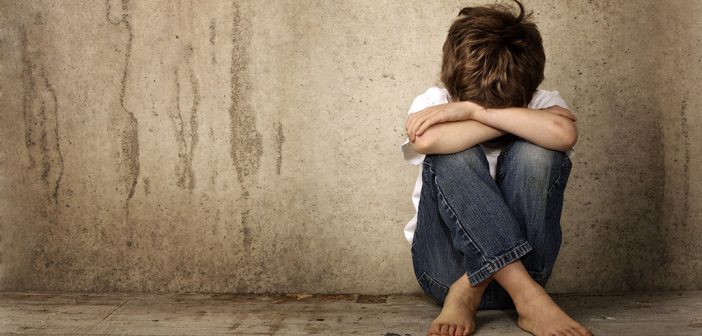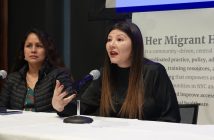When people think of frontline workers in the COVID-19 pandemic, images of doctors, nurses, and first responders often come to mind. But leaders in child welfare say that another group should be recognized as well—direct care workers, including social workers and case managers.
“Our frontline staff are the direct heroes in this work during the pandemic,” said Denise Hinds, assistant executive director of Good Shepherd Services, a social service agency. “They have been the heroes for us, they have been the heroes for our children, our youth, and our families.”
Hinds joined other leaders in the New York City child welfare industry on August 12 for a virtual discussion titled “The Current and Future Impact of COVID-19 on Child Welfare in NYC,” which was organized by Fordham’s Graduate School of Social Service (GSS).
Shirley Gatenio Gabel, holder of the Quaranta Chair for Justice for Children at GSS, said that the goal of the of webinar was to understand how children and families who are a part of New York City’s child welfare system were receiving help during this time, and discuss new challenges and needs that have arisen. Children and families in the child welfare system are among those hit hardest by this pandemic, said Gabel, who served as moderator.
“The coronavirus pandemic has affected us all yet it has disproportionately hit hardest on those who were marginalized and vulnerable before the pandemic,” she said.
That’s one of the reasons why Gabel asked the Administration for Children’s Services (ACS) for the impact of drops in cases and referrals for preventative services. According to data from the New York statewide central register, intakes in April 2019 were 5,037 compared to just 2,292 in April 2020. Referrals to preventative services went from 1,299 in April 2019 to just 887 in April 2020, according to the data.
A Concerning Drop in Referrals
“Reports of cases to be investigated are significantly down from last year and referrals to preventive services are down from last year—the question is can we assume that this is good news or cause for concern?” she asked.
David Hansell, New York City commissioner of the Administration for Children’s Services (ACS) said that cases dropped abruptly at the start because many of the usual people who referred children were no longer seeing them regularly at school.
“The chart showed that in mid-March, at the very beginning of the pandemic in New York City, and right after the schools closed, we did see a very significant drop,” he said. “The month of April the number of reports dropped by 50%. That’s not entirely surprising, because in routine times, about a quarter of our reports come from school personnel. Others come from other providers who stopped seeing children in the early days of the pandemic.”
Still, Hansell said that the numbers of referrals has been slowly going back up to normal with community members, friends, and family stepping up when a child is in need.
“The number of reports we’re getting is almost back to the typical level we’d be getting during a summer month,” he said. “That suggests that community members and family and friends were really stepping up and providing good oversight of kids and making sure they were safe.”
Throughout the pandemic, case workers and social workers were often still seeing children and families in-person through home visits and at other meetings, such as children in foster care meeting with their biological families, particularly for those most in need.
Continuing to Serve Vulnerable Families
“We know that the critical work that we do on the ground for our children, youth, and families—we knew we needed people on the ground,” Hinds said.
She and Bill Baccaglini, president and CEO of New York Foundling, credited ACS with providing guidance, funding, and personal protective equipment for those who had to continue to work in the fields during this time.
Raysa Rodriguez, associate executive director at the New York Citizens’ Committee for Children, said that it’s going to take a lot in the long run to help stabilize some of these families who have been dramatically affected by the pandemic.
“The truth is that all the families we were worried about and fighting for pre-COVID … all of these communities are exactly the communities that have been hardest hit by COVID,” she said, citing particularly those that experience housing instability, overcrowding, and limited access to health care. “(We’ve seen an) incredible amount of loss—loss of life, loss of income—we don’t fully know the extent. When I think about what it takes to keep children safe, the reality is that it’s pretty simple, it’s stable families.”
New Telecare Skills
Baccaglini said one glimmer of hope he thinks the system should take out of this is the skills social workers learned in providing telehealth and telecare services.
“Coming out of this, I think if we don’t take the opportunity to fully examine how telecare, not just telehealth, fits in our system, we’re doing a real injustice to the kids and families we serve,” he said. “It’s not a home visit or a Zoom meeting—I’m talking about how this fits into the continuum of care. I am convinced that this will, going forward, play a critical role.”



